This rich Ragu combines ground beef and Italian sausage with diced veggies and crushed tomatoes. We toss this deeply savory and indulgent-tasting sauce with pasta, garnished with herbs, and topped with freshly grated Parmesan.
While traveling through Italy, I had the chance to take a few cooking classes and this very recipe is based off an authentic Italian one!
What Is Ragu Sauce?
Ragu is a meat-based sauce most commonly served with pasta. One of the most beloved sauces in Italian cuisine, a Ragu is made from ground or chopped meat, celery, onion, carrots, aromatic herbs, and tomatoes. The sauce is simmered slowly over a long period of time becoming ultra-flavorful and tender.
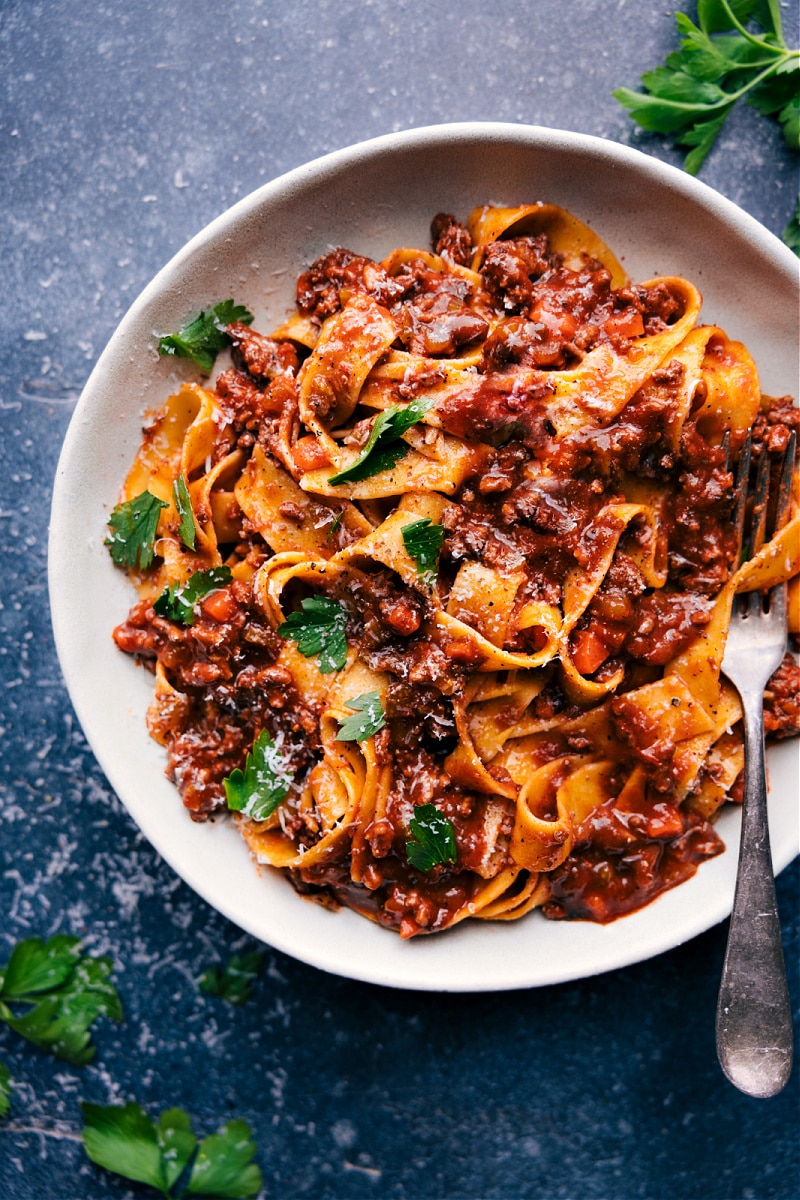
Our Favorite Ragu Recipe
I’ve shared quite a bit about the cooking classes we took in Italy, specifically when sharing this Beef Ragu recipe. That recipe is made with shredded beef (made in the slow cooker) and based on an authentic Italian recipe from the cooking class.
And today’s recipe is based on the same recipe, but we’re using sausage plus ground beef and cooking it on the stovetop. My kiddos could eat pasta for every meal if I let them and a good Ragu sauce is a favorite in our home.
A few ingredient-specific notes, tips, and tricks:
Ragu Ingredients
- Ground beef chuck. Ground chuck is a form of ground beef that is taken from the neck and shoulder of the cow. It’s got an 80/20 lean to fat ratio which makes it great for a rich sauce like Ragu. If you’re looking to reduce fat or calories, pick a lean ground beef instead.
- Italian sausage. Depending on personal preference, use mild or spicy sausage. Look for well-marbled meat, which is going to contribute more flavor and richness. Remove the casings before cooking and use the leftover sausage in these quick Italian Hoagies.
- Veggies: Dice veggies small and aim to keep them the same size. You don’t want to end up with large chunks of veggies in the final sauce; we want them to be fairly imperceptible when looking at the sauce–they’re there to add flavor.
- Crushed tomatoes: Use the best quality canned tomatoes you can find! We use and recommend San Marzano or Muir Glen crushed tomatoes (so much flavor!) With cheaper tomatoes, you may need to add some sugar to balance out acidity.
Note: San Marzano and Muir Glen are trademarked brand names of canned tomatoes.
Ragu Pasta
You can use whatever pasta you prefer. Our favorite pasta to use in this recipe is pappardelle. A lot of times pappardelle is confused with tagliatelle–here are the differences.
Quick Tip
What is pappardelle? Pappardelle is one of the less-common kinds of pasta, but most larger grocery stores carry it. It’s a long, flat, wide noodle–imagine taking a lasagna noodle and slicing it into three long strips. That’s pretty much what pappardelle looks like. If you use spaghetti as the typical width of a noodle, fettuccine is a bit flatter and wider. Tagliatelle is a bit wider than fettuccine and pappardelle is the widest of all.
How Can I Make My Ragu Better?
- Take time to sear the meat. Searing adds color and color = flavor. Let the beef and sausage stand in the hot pan for a minute before crumbling and browning. This will elevate the flavor of the meat.
- Use good ingredients. The better the ingredients, the better the flavor!
- Make the sauce ahead of time. This sauce only gets more flavorful and tender the longer it sits. I like to make it a day before serving.
- Emulsify sauce and pasta. Tossing the hot pasta with the Ragu sauce and reserved pasta water is called emulsifying and that’s how you get a wonderfully smooth and flavorful sauce that clings to the pasta instead of falling to the bottom of the pot!
- Don’t forget to season at every step. Season the meat, the veggies, the pasta water, and the final dish (if needed). Seasoning as you cook (as opposed to just at the end) is a great way to add more dimension to the dish.
Ragu FAQs
What type of meat is in Ragu?
Any ground or chopped meat can be considered a Ragu–beef, pork, even horse!
I learned to make authentic Ragu while I was in Italy and that recipe used shredded beef.
What is the difference between Ragu and spaghetti sauce?
Ragu has meat in the sauce while spaghetti sauce does not necessarily have to have meat (it can be solely vegetable based).
You can think of Ragu as tomato sauce with meat, and spaghetti sauce is simply tomato sauce.
How do I add flavor to Ragu sauce?
If you’re looking to pop the flavor ja bit, consider adding one of the following:
- Stir in a pinch more of salt and pepper.
- Toss in some fresh herbs (basil, thyme, or oregano).
- Add in some red pepper flakes for some heat.
- Top the sauce with Parmigiano Reggiano cheese.
Storage
Make Ahead Of Time!
Since the sauce is tossed separately with the pasta, it’s a great make-ahead component. In fact, the Ragu only gets more flavorful and tender as it sits and ingredients have a chance to meld. When ready to serve, cook the pasta fresh and emulsify the sauce plus pasta right before eating.
Prepare an Italian-Inspired Feast!
- Start with a simple Bruschetta recipe as an appetizer.
- Then serve this Focaccia bread, Roasted Broccoli, and Apple Fennel Salad as sides.
- Finish things strong with homemade Tiramisu, Cannoli Dip, or Gelato for dessert.
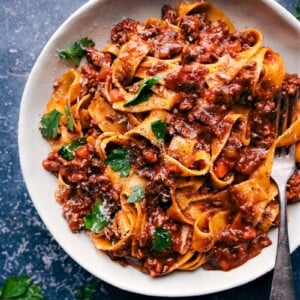
Ragu
Equipment
Ingredients
- 1-1/2 tablespoons olive oil
- 1 pound ground beef chuck 80/20
- 1/2 of a 19-ounce package Italian sausage see note 1
- Salt and pepper
- 3 cups mirepoix finely diced onion, carrots, celery—I use 1 cup each
- 2 teaspoons minced garlic
- 3 tablespoons tomato paste
- 1 (28-ounce) can crushed tomatoes see note 2
- 1 teaspoon dried oregano
- 1 teaspoon dried thyme
- 1 teaspoon dried basil
- 1 teaspoon dried crushed rosemary
- 2 teaspoons Worcestershire sauce
- 2 teaspoons beef bouillon powder
- 3 dried bay leaves
- 2 cups beef broth
- 1 cup red wine or use 1 cup additional broth and 1 to 3 teaspoons balsamic vinegar
- 2 to 3 teaspoons granulated sugar optional
- 8 ounces pasta of choice for serving, not entire package
- Freshly grated Parmesan cheese for serving
- 1/4 cup finely chopped fresh parsley optional
Instructions
- Add oil to a large, heavy-bottomed pot. Heat to high and once hot, add beef and sausage (in a single layer). Season to taste (I add 1/2 teaspoon each salt and pepper). Let stand undisturbed for about 1 minute to get a nice sear before breaking up and crumbling to brown with a wooden spoon. Once meat is browned, use a slotted spoon to remove to a bowl, leaving grease behind. (If there is more than 2 tablespoons grease, drain the rest off—see note 3).
- Reduce heat to medium. Add in mirepoix. Season to taste (I add 1/2 teaspoon each salt and pepper). Sauté, stirring occasionally, until veggies begin to soften, 7–10 minutes. Add garlic and tomato paste and stir for 1 minute. Add crushed tomatoes and cook, stirring constantly, for 1 minute.
- Return cooked meat to the pot, along with oregano, thyme, basil, rosemary, Worcestershire sauce, beef bouillon, bay leaves, beef broth, and red wine. Stir.
- Bring to a simmer, then turn heat to lowest setting. Cover with a lid and cook for 2 up to 2-1/2 hours. Stir occasionally, returning the lid after stirring. The sauce will thicken, reduce, and become ultra flavorful as it slowly simmers.
- Stir sauce and adjust seasonings, adding more salt if needed. Depending on tomatoes used, you may even need to add a touch of sugar to counteract (I add 2 teaspoons). For some acidity, add some balsamic vinegar to taste (I add 2 teaspoons). Remove bay leaves and discard. Enjoy sauce served over cooked pasta with freshly grated Parmesan and fresh parsley (if using). See note 4 for how to serve the “authentic” way 🙂
Video
Recipe Notes
Nutrition
Nutrition information is automatically calculated, so should only be used as an approximation.
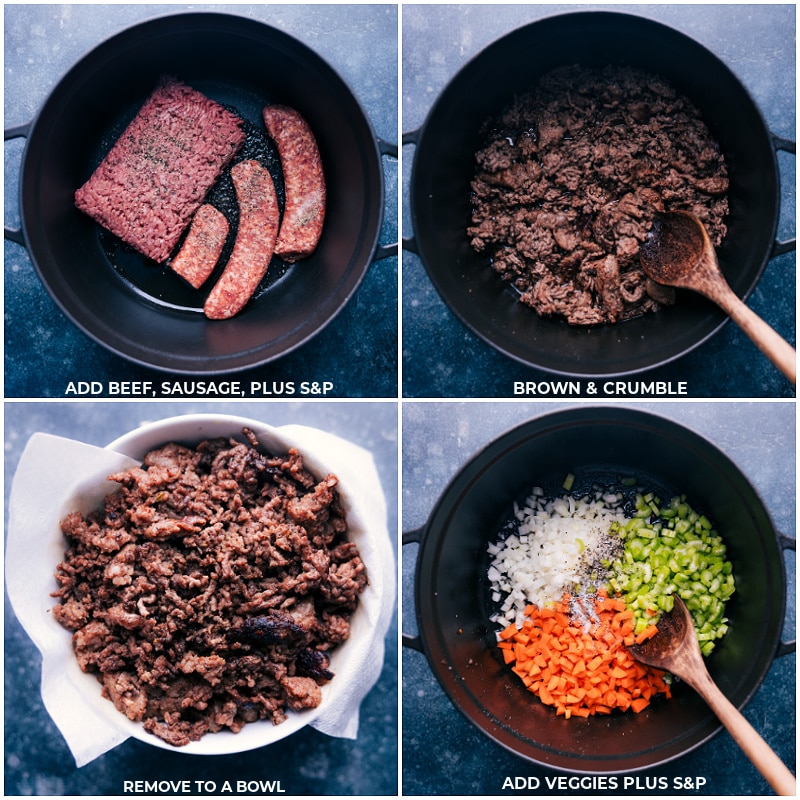
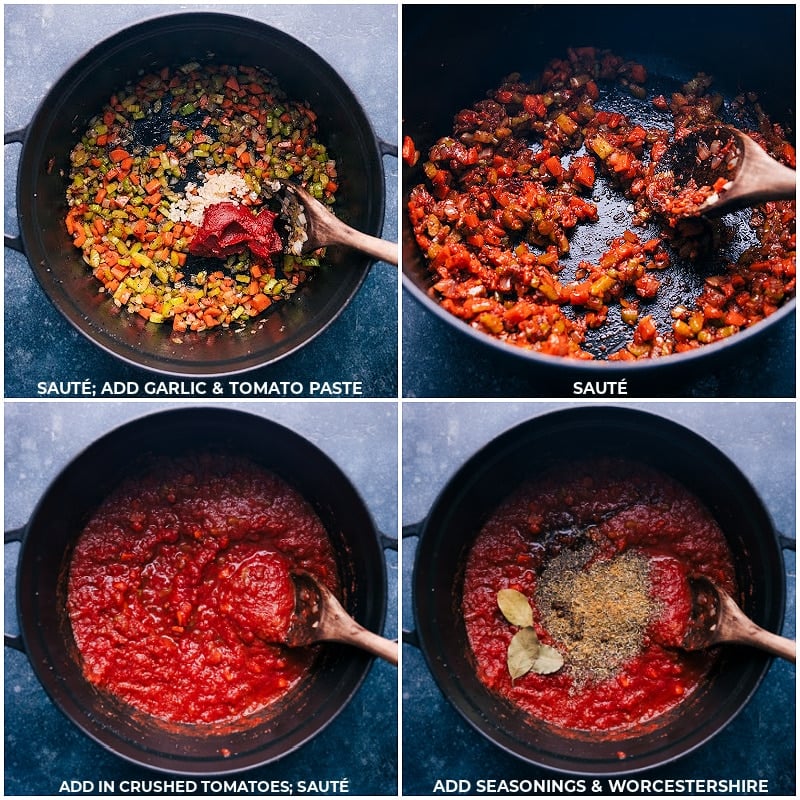
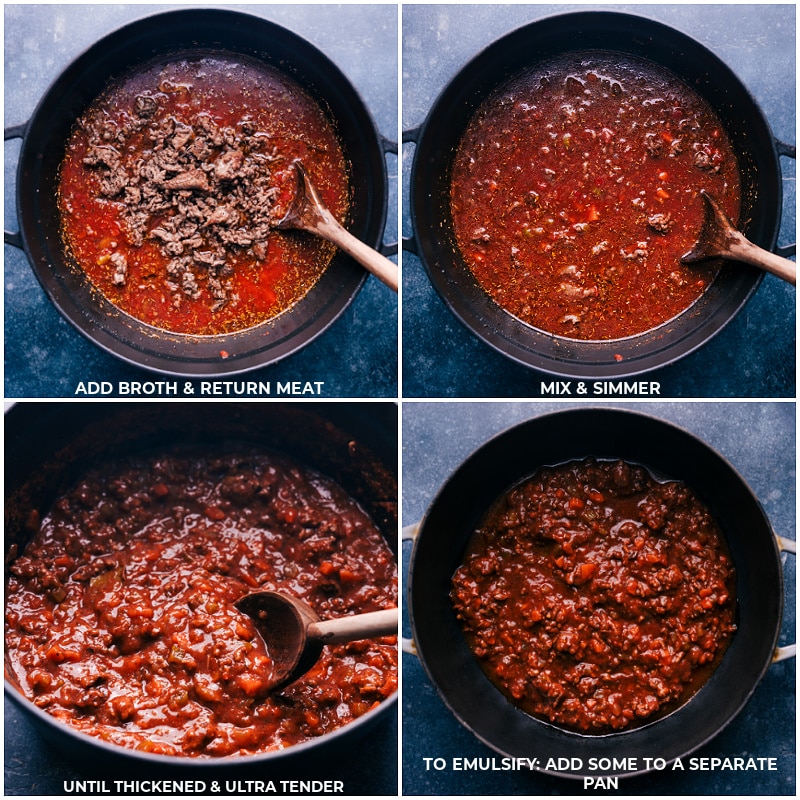
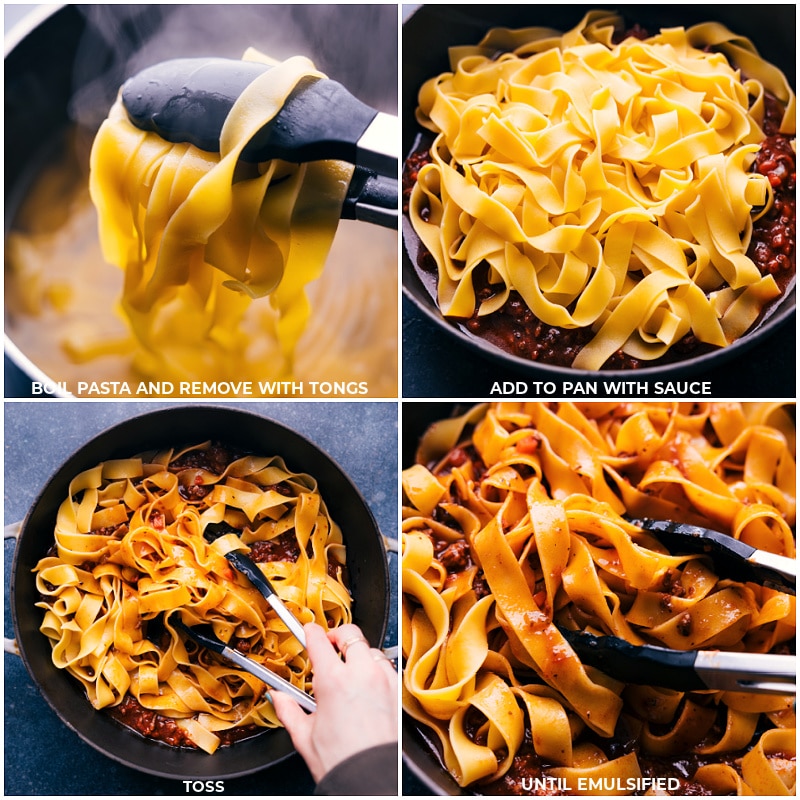
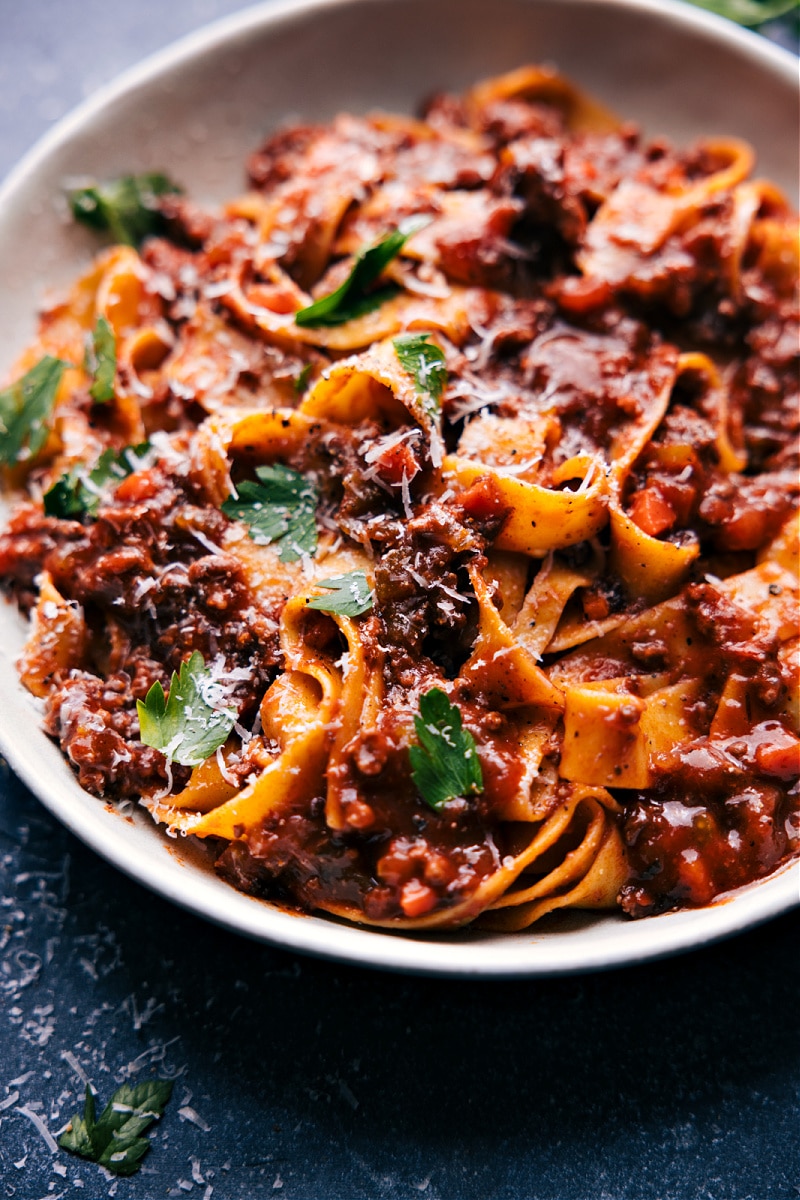



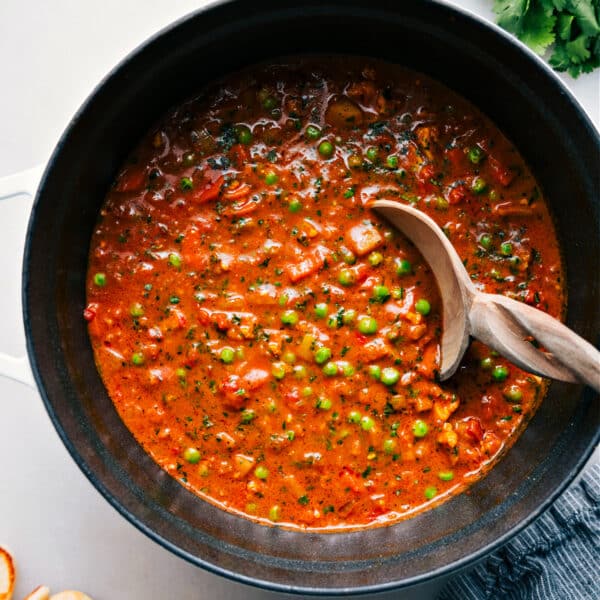
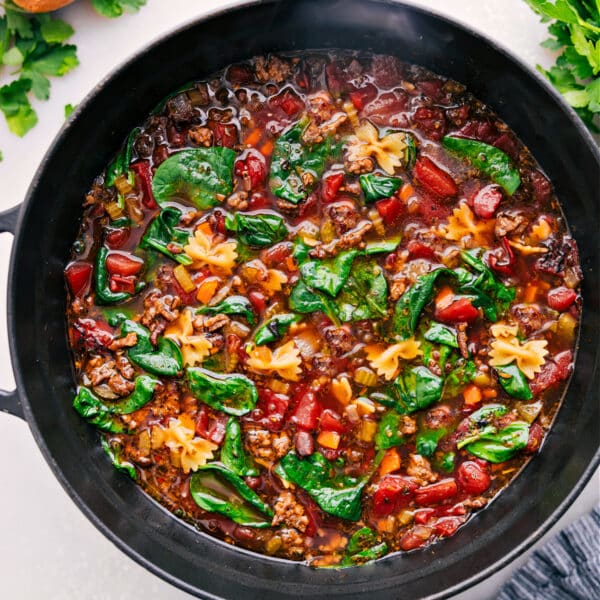
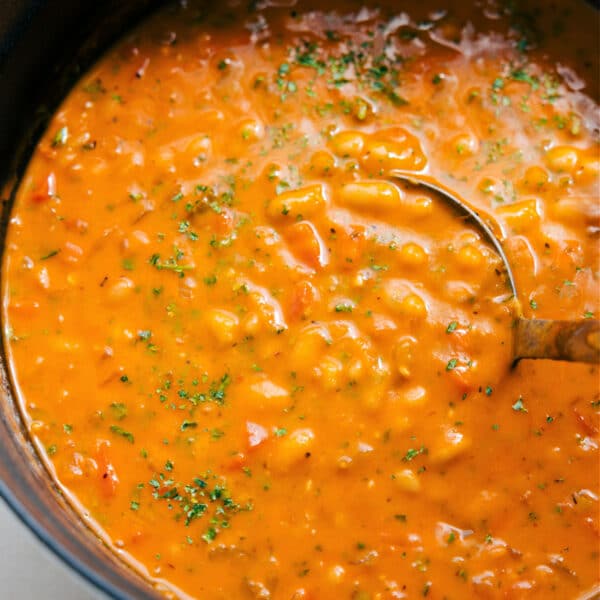









Not yet, I can’t wait!!!
Can’t wait for you to try! 🙂